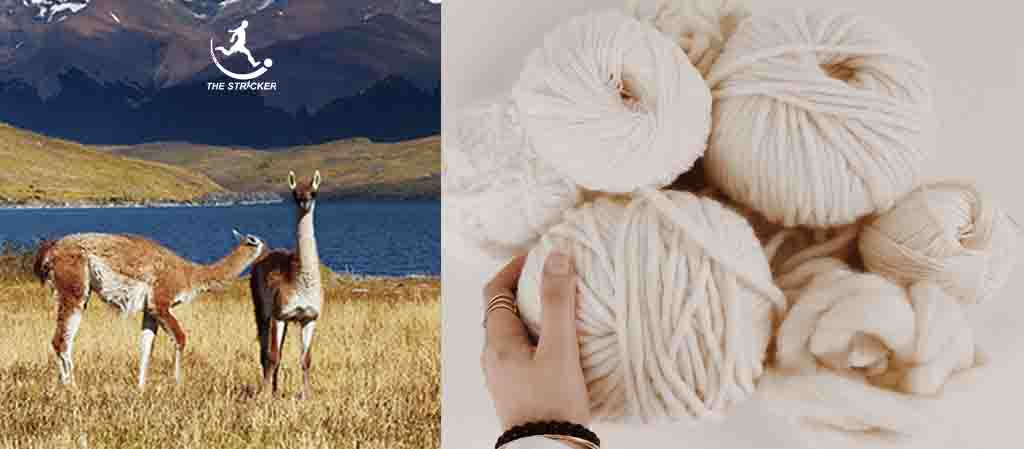
Guanaco fiber is one of the finest natural fibers in the world. Guanaco have a double coat similar to cashmere; the undercoat is a fine fiber and ranges in colour from honey brown to dark cinnamon. The outer coat consists of coarse fibers called guard hairs; these are a darker brown and help to keep debris and moisture out. Guanaco fiber must go through the dehairing process which removes these coarser guard hairs and leaves the downy undercoat which is the valued part of the fleece. The guanaco fiber is typically between 14 and 18 microns in diameter.
Characteristics of Guanaco Fiber
- It is finer than cashmere
- three times warmer than wool
- similar in texture to the vicuna
- has thermal properties as it is a hollow fiber
- expensive!
Origin of Guanaco Fiber
Guanacos are a member of the camelid family, living typically high in the Andes Mountains of South America. Because of the value of their fiber; they are a protected species. Wild cousins of the domestic llama and alpaca; as well as the vicuna, the guanaco’s natural range, lies between northern Peru to the southernmost tip of Chile. Now numbering over 1 million, and protected by the government of Chile; the guanaco roams mostly in the Torres del Paine National Park. This tiny animal produces extremely soft; a downy fiber that is surprisingly easy to spin.
Guanacos have a double coat similar to cashmere; the undercoat is a fine fiber one of the finest natural fibers in the world and boasts a uniform and very pale camel color. The outer coat consists of much coarser fibers, guard hairs; these are much darker cinnamon (the belly and neck contain white guard hairs) and act to keep debris and moisture out.
Guanaco fiber must go through the dehairing process which removes these coarser guard hairs and leaves the downy undercoat which is the valued part of the fleece. The average weight of fleeces is about 750 grams although some breeders have some guanaco that produces nearly 2 kilos. The fleece of the Guanaco is technically made up of hairs with a medullated core and should therefore be called fiber, not wool.
The processing to remove the guard hair and the (generally) lighter coat; as well as the scarcity of guanacos outside of South America all, lead to the premium price of this fiber. Of all the world’s fur-bearing animals the guanaco’s wool is second only in fineness to that of its wild cousin, the vicuna.
References:
You May Also Read:
